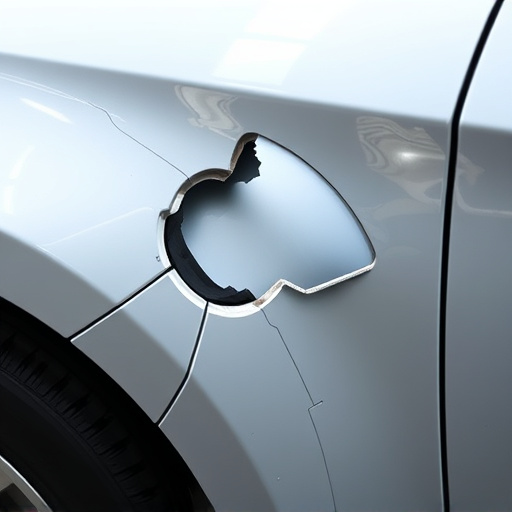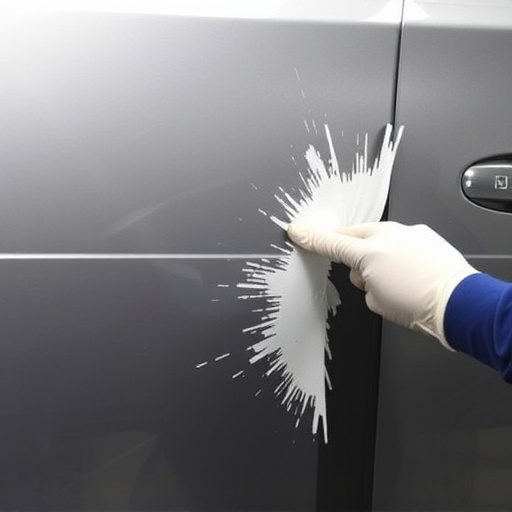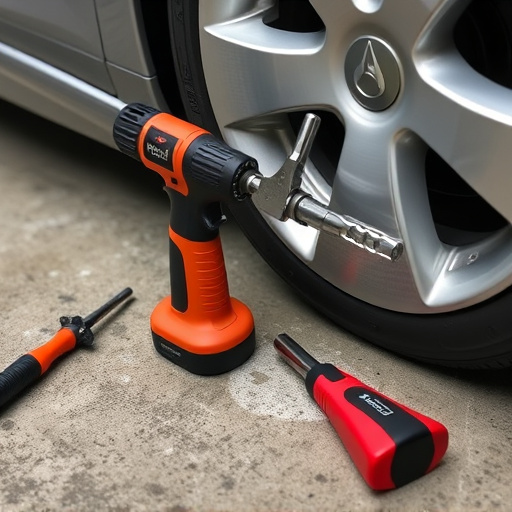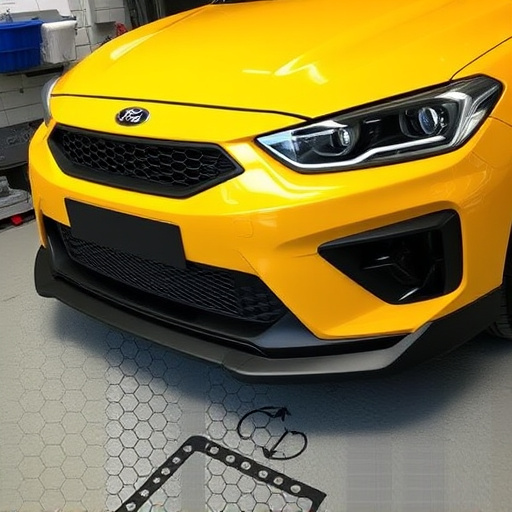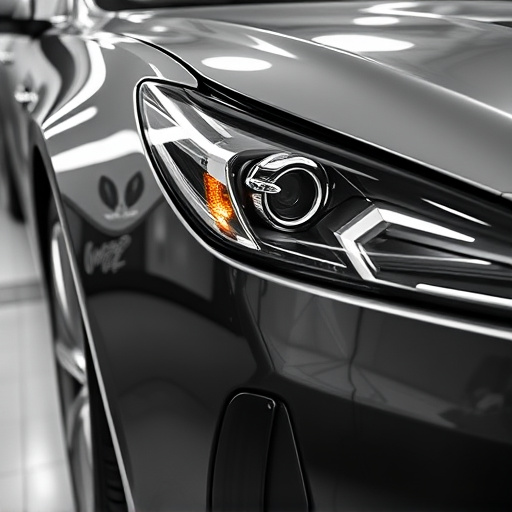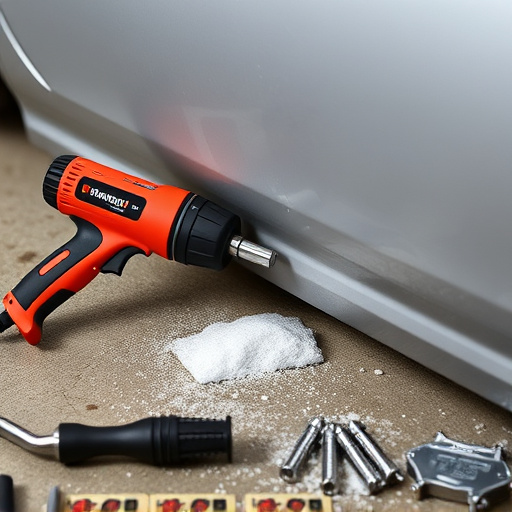Tesla vehicles' crumple zones, designed to deform upon impact and protect occupants, require specialized repair after sensor activation or damage events like hail. Proper repairs demand expert technicians using advanced techniques to maintain structural integrity and strategic deformation, sometimes employing Mercedes Benz collision repair methods. Immediate and precise post-collision repairs are crucial for safety and vehicle integrity, involving assessing damage, replacing/reinforcing components, reinstalling sensors, and final inspections. Professional body shop services ensure the crumple zone retains its protective functions for future collisions.
“Tesla vehicles are renowned for their innovative safety features, and at the heart of this technology lies the crumple zone. This critical component plays a pivotal role in absorbing impact energy during collisions, minimizing structural damage, and enhancing passenger safety. When the on-board sensors detect an accident, they activate the crumple zone repair mechanism. This article delves into the intricate process, offering a step-by-step guide to understanding and optimizing Tesla crumple zone repairs for maximum safety.”
- Understanding Tesla's Crumple Zone Design
- Sensor Activation: Initiating the Repair Process
- Step-by-Step Repair Procedure for Optimal Safety
Understanding Tesla's Crumple Zone Design
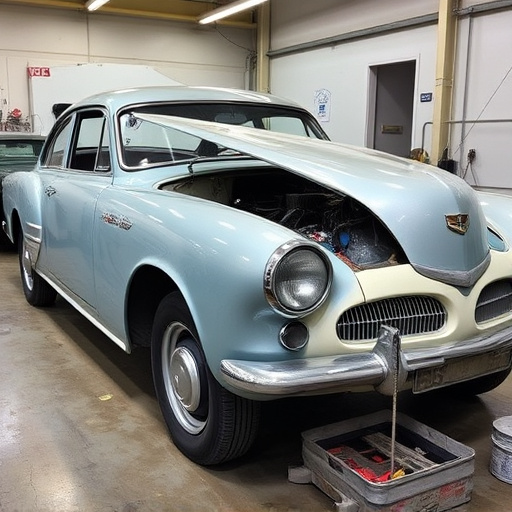
Tesla’s crumple zone design is a sophisticated safety feature engineered into their vehicles. Unlike traditional car structures that can be rigid and harmful in the event of a collision, Tesla’s crumple zones are strategically designed areas within the vehicle’s bodywork that deform or ‘crumple’ upon impact, absorbing much of the energy from the collision. This innovative approach significantly reduces the force transferred to the occupants, providing better protection during accidents.
Understanding this design is crucial when considering Tesla crumple zone repair after sensor activation following an impact. While hail damage repair or auto body services might be necessary to address external aesthetics and structural integrity, the crumple zone itself often needs meticulous attention to ensure it retains its original safety effectiveness. Repairs should be carried out by professionals who understand vehicle bodywork dynamics, ensuring the zone remains functional and ready to protect passengers in future incidents.
Sensor Activation: Initiating the Repair Process
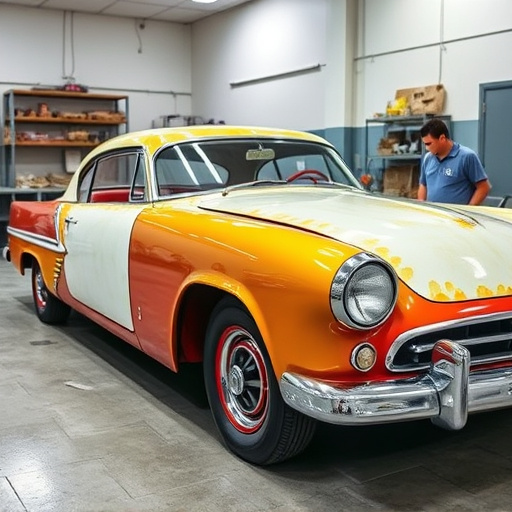
When a Tesla encounters an impact, its advanced sensors are designed to swiftly detect and analyze the situation. These sensors play a pivotal role in initiating the vehicle’s crumple zone repair process, ensuring safety and minimizing damage. Upon activation, they send critical data to the car’s computer system, which triggers a series of precise actions. This includes deploying airbags, adjusting seatbelts, and—most notably for our discussion—preparing the crumple zone for efficient energy absorption.
The crumple zone, a strategic component in modern vehicle design, is engineered to deform under impact, dissipating crash energy and protecting occupants. After sensor activation, specialized repair techniques are employed to restore this crucial area. Expert technicians utilize advanced tools and methods, sometimes involving state-of-the-art Mercedes Benz collision repair techniques or even custom car body restoration, to ensure the crumple zone is returned to its optimal shape while maintaining structural integrity. Car paint services may also be required to match the vehicle’s original finish seamlessly.
Step-by-Step Repair Procedure for Optimal Safety
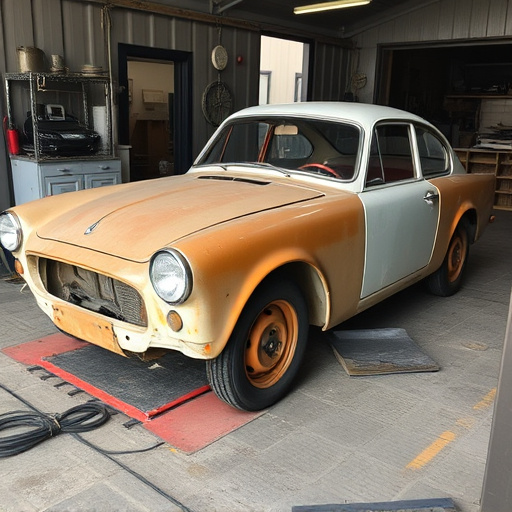
After a collision, especially when the Tesla Crumple Zone has been activated, it’s crucial to begin repairs promptly to maintain optimal safety and vehicle integrity. The crumple zone is designed to absorb impact energy, protecting occupants by deforming in a controlled manner. Here’s a step-by-step guide for repairing this critical component:
1. Assess the Damage: Inspect the crumple zone closely for any visible signs of stress or deformation. Use diagnostic tools to check sensor functionality and identify affected areas. This initial evaluation ensures that repairs are targeted and effective, addressing both structural and electronic components.
2. Remove Deformed Panels: Using specialized tools, carefully remove any damaged panels within the crumple zone. This step requires precision to avoid damaging surrounding parts or sensors. It’s a delicate process that often involves the expertise of professional body shop services.
3. Replace or Reinforce Damage Components: Depending on the severity, either replace the entire panel or reinforce it with specialized materials. Modern vehicle repair services utilize advanced techniques and high-quality parts to ensure structural integrity. This step is crucial for maintaining the safety features designed into the crumple zone.
4. Reinstall Sensors and Calibrate: Once repairs are complete, reinstall any removed sensors and calibrate them to ensure accurate performance. Proper calibration is essential for the vehicle’s airbag system to function correctly in future collisions.
5. Final Inspection and Testing: Conduct a thorough inspection to verify that all components have been correctly installed and aligned. Run diagnostic tests to confirm sensor functionality and overall system readiness. This final step ensures the Tesla Crumple Zone is ready to protect occupants as intended.
Tesla’s innovative crumple zone design, combined with its advanced sensor technology, plays a pivotal role in enhancing vehicle safety. When the impact sensor is activated, it triggers a precise and efficient repair process, ensuring optimal passenger protection. By following a step-by-step procedure, Tesla owners can effectively manage crumple zone repairs, maintaining both the vehicle’s structural integrity and its overall safety standards. This focused approach to Tesla crumple zone repair highlights the company’s commitment to revolutionizing automotive safety technology.
